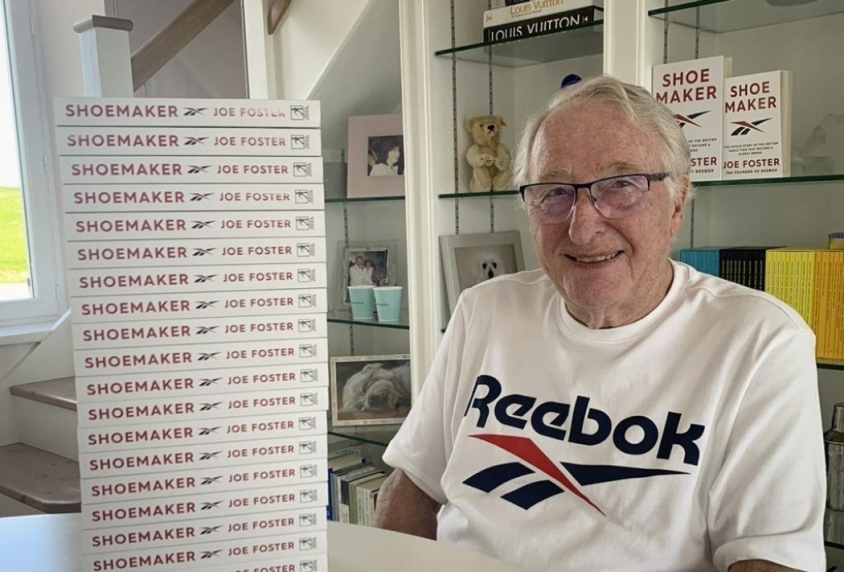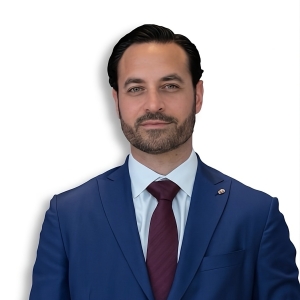
Although it’s been in his family for generations, you’ve probably never heard the name Joe Foster. It might surprise you to learn that he’s built a multi-billion-dollar global company, whose name you’ll recognize as well as your own. The reason you may have never heard of Joe Foster is because the business was never about him. It was about being the best in sport shoes. Does the name Reebok ring a bell?
Foster’s grandfather’s eponymous British company dating back to 1895 became famous for pioneering the spiked running shoe and outfitting the world’s best athletes. Wearing shoes made by JW Foster & Sons, Harold Abrahams and Eric Liddell won Olympic Gold Medals in the 1924 Paris Olympics and were later immortalized in the Academy Award-winning film Chariots of Fire.
Fresh off two years in the UK’s National Service, the young Joe and his older brother Jeff, considered joining the family business. But having observed internal strife, the brothers believed it best to strike out on their own. Once they were prepared to make their move, they opened Mercury Sports Footwear in an old brewery. It was the beginning of a great success story, and the birth of their first challenge.
The name of their company was already registered; a patent agent said to create a list of ten new ones. Inspiration came from an unlikely source, an American dictionary. It was 1960 when Foster dusted it off, turning to the letter “R” simply because he loved it. His gaze finally fell upon the name of a small South African gazelle, a good word to represent a running company. Two weeks later their wish was granted. The name of the new company would be Reebok.
Four years into their venture they hit another snag. Adidas sent them a letter saying their logo was too similar to theirs. Foster’s reaction? Change the logo and pin that letter to the wall; Adidas knows we’re here! It was another teaching moment. The name had to change; they got a better name. The logo had to change; they got a better logo.
Of having to pivot, Foster says, “I think if you don’t learn you miss the opportunities…You can have some good ideas, but you usually find that an idea has to move around a bit before it can become a winner.”
Then, in 1979 after 11 years and six failed attempts, Reebok broke into the American market. Foster had learned a lot about manufacturing, distributing, and marketing up to this point. But it was a good turn of fortune that made Reebok a household name in the USA.
The big break came in the early 1980’s when Reebok started making shoes for the latest American women’s exercise craze—aerobics. And when the celebrity queen of aerobics, Jane Fonda herself, donned a pair of the new buttery soft leather shoes in her workout videos the brand exploded. Globally.
Serendipitously, at the same time Nike hit a wall and with too much inventory they pulled out of three South Korean factories. Reebok, needing to expand, moved in. In five years, Reebok grew from nine to 900 million dollars. For the next four years they focused solely on product delivery to keep up with demand. With solid movement into the American professional sports market, the street followed, and Reebok became a four-billion-dollar company.
Foster credits his success to enthusiasm, optimism, and the willingness to look for what he calls “the white spaces.” Those white spaces, or gaps in the market, give you the opportunity to create something new, perhaps something you never had in mind. Changing the feeling of a sports shoe, made of pliable garment leather for aerobics is a great example. Reebok’s coveted pump shoe is another one.
When an NBA superstar wears your shoe and effortlessly dunks in a game, well, as Foster says, “You can’t pay for that kind of advertising.”
In 1990 Foster stepped away from the daily operations of the company to serve as a global brand ambassador. Stories of the rise of Reebok were all over the Internet; the problem was they were mostly untrue, so he wrote a book to set the record straight and now enjoys spending his time sharing his knowledge with entrepreneurs.
The 87-year-old tells them, “To be an entrepreneur you’ve got to have optimism.” If you can look at the problem and turn it into a challenge, you can think differently about solutions, often ending up in a better position.
Businesses are scaling rapidly these days, beginning with an exit strategy to sell quickly. For Foster it was never about scaling to sell. It was about building a brand. Reebok set out to be the gazelle of running shoes. Who would have thought that the brand would move so swiftly and enduringly? Our money is on Joe Foster, and his optimism.
Foster’s book, Shoemaker: The Untold Story of the British Family Firm that Became a Global Brand is available on Amazon. Check out his website to learn more Joseph William Foster.

